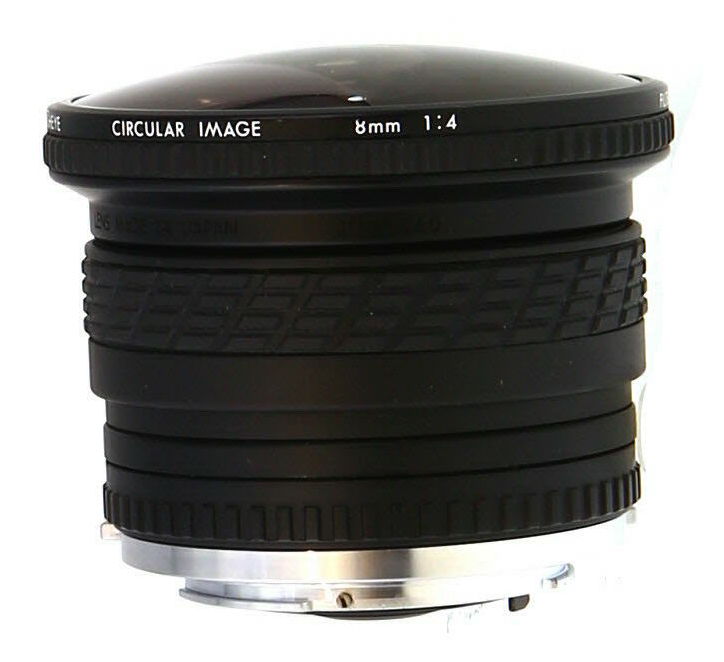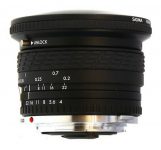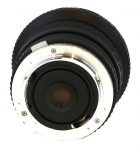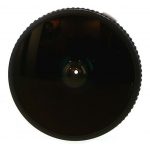Sigma MF 8mm F/4 Fisheye
Fisheye lens • Film era • Discontinued
Abbreviations
| FISHEYE | An ultra-wide angle lens with strong uncorrected barrel distortion and extreme angle of view. |
Model history (3)
| ■Sigma MF 8mm F/4 Filtermatic Fisheye | A | 11 - 7 | 0.20m | -- | 1982 ● | |
| ■Sigma MF 8mm F/4 Fisheye | A | 10 - 6 | 0.20m | -- | 1988 ● | |
| ■Sigma MF 8mm F/4 Fisheye ZEN | A | 10 - 6 | 0.20m | -- | 1992 ● | |
Specification
| Optical design: | |
| 35mm full frame | |
| 8mm | |
| F/4 | |
| 10 elements in 6 groups | |
| Circular fisheye | |
| Canon FD [42mm] | |
| Contax/Yashica [45.5mm] | |
| Fujica X [43.5mm] | |
| Konica AR [40.5mm] | |
| M42 [45.5mm] | |
| Minolta SR [43.5mm] | |
| Nikon F [46.5mm] | |
| Olympus OM [46mm] | |
| Pentax K [45.5mm] | |
| Rollei QBM [44.46mm] | |
| 180° | |
| Diaphragm mechanism: | |
Diaphragm type: | Automatic |
Aperture control: | Aperture ring (with or without Auto Exposure setting) |
| 5 (five) | |
| Focusing: | |
| 0.20m | |
| 1:13.9 | |
Focusing modes: | Manual focus only |
Manual focus control: | Focusing ring |
| Physical characteristics: | |
| 320g (Nikon F) | |
| ⌀73.5×59mm (Nikon F) | |
| Accessories: | |
| Removable front filters are not accepted | |
| Built-in petal-shaped | |
| <No data> |
Source of data
- Manufacturer's technical data.
Typical characteristics of fisheye lenses
- Extreme angle of view (at least 180° diagonally);
- Circular types (the image circle of the lens is inscribed in the image frame) or diagonal types (cover the entire image frame);
- Usually of equidistant projection type, with the distance from the picture center to any given point always proportional to the angle from the optical axis to that point;
- Huge barrel distortion;
- Short closest focusing distance (0.20 - 0.30m with 35mm full-frame prime lenses);
- Very large depth of field, eliminating the need for autofocus or precise manual focusing;
- Due to the extreme angle of view and convex front element, front filters cannot be used;
- Often equipped with a filter turret with swivel-mounted filters;
- Often come with a small, built-in petal-shaped lens hood.
From the editor
The lens is of the same optical design as the predecessor. The difference in the number of elements and groups is most likely due to whether the rear filter was taken into account or not.



